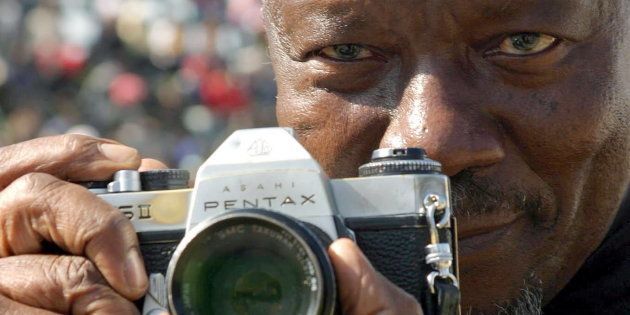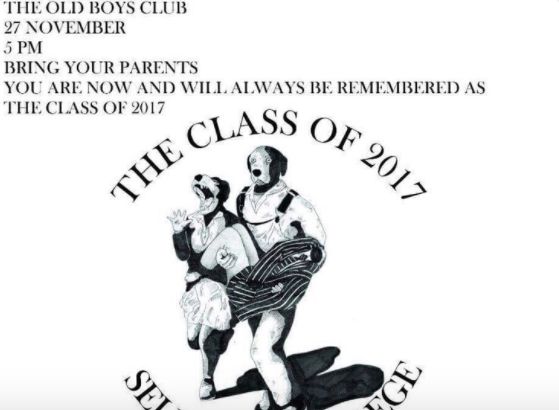
Sam Nzima, the man who took the iconic picture of Hector Pieterson that was desecrated by a high school pupil from East London's Selborne College, told HuffPost on Wednesday that he was "very disturbed" and would "not hold back the punches" concerning the matter.
Nzima captured the picture of Mbuyisa Makhubu carrying Pieterson's body as he and Antoinette Sithole ran from the police, who were firing on the Soweto student protest of June 16, 1976.
The veteran photographer said he is seeking legal advice and is in talks with Adams & Adams Attorneys, the company that owns the rights to the picture, to figure out whether they can hold Selborne College legally accountable.
In the invitation altered by the matriculant, Makhubu and Sithole's faces are replaced with the faces of the dogs (according to the pupil, because dogs are the Selborne school mascots), while Pieterson's head has been removed and his body rendered as an empty school uniform.
The College's school governing body, as well as the pupil, have apologised.

"They can't just play with the picture. I lost my life because of that picture; my heart is invested in it," Nzima said.
When he took the photograph of Pieterson, he was still working for "The World", covering the student uprisings for the newspaper. Towards the end of 1976, the South African security police started targeting students, journalists and photographers who had been at the June 16 uprising, and this carried on into 1977.
Nzima had to flee Soweto back to his hometown, Ximhungwe village in Nelspruit, where the security police found him after six months and placed him under house arrest.
"I was arrested and jailed in my house because of the picture. I was jailed until freedom came," he said.
He believes today's youth are ignorant of the extent to which black people were oppressed under apartheid.
"Our children need to be taught about apartheid in our schools. They need to know where we come from, so they can respect the freedom they enjoy today," he explained. "People died!"
"It does not add up. It is complete ignorance and pure stupidity"
– Christopher Till, Apartheid Museum co-founder.
He said 1976 was a turning point for him, and times were tough.
"It is easy for children today to talk about taking the land without compensation –– at the time, we did not have an option. We were fighting guns with bins and spades," Nzima said.
Christopher Till, one of the founders of the Apartheid Museum in Johannesburg, said it was "really sad that 23 years after democracy" people still behaved in this manner.
"This generation of young people do not know anything about the past," he told HuffPost.
He also questioned the schooling system at many South African schools, saying it was unfortunate that not all pupils study history beyond grade 10.
"For a group of matriculants to use such such a powerful, iconic picture is misguided," Till said. "It does not add up. It is complete ignorance and pure stupidity."
